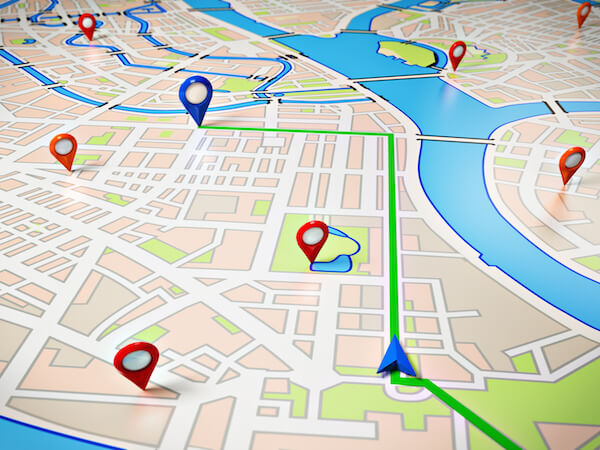Back in the day, cell phones were used for talking. Then for texting. Then for everything from web surfing to navigation. Today, hardly any one makes a move without first punching an address into their phone’s map app, or doing a web search to find location, hours, phone number, etc. The major player in digital maps is of course Google Maps. What is Google Maps? It’s not just another letter in Google’s newly formed parent company ‘Alphabet.’ The highly intuitive navigational superstar is a separate Google entity that can either lead customers to your business – or drive them away. Learning more about Google Maps can help you use it effectively to improve your SEO and drive more traffic to your business.
A Street-Level View of What Google Maps Is
In the Google family of apps and services, Maps is a stand-alone entity. As a force to be reckoned with, it doesn’t take orders from Google’s Search Engines or Paid Advertising program. Instead, it’s a data conglomerate that pools its own intelligence with information from other big data aggregators (even Google has its data sources).
Google Maps uses this information to tell consumers about the businesses near them, or in a user-specified locale. For instance, a hungry consumer looking for pizza may search for ‘pizza in Orlando,’ or even just ‘pizza,’ and Google Maps will deliver results for the closest pizza places. This process works independently of a business’ organic search rankings or participation in paid search advertising.
The Satellite View – Why It Matters
If you want people to physically find you, then you need to be on the map. And today’s maps have gone digital, with Google Maps leading the way. As a digital tool, the map relies upon information gathered from numerous sources – not historical landmarks that never change. As a result, information can easily become out of date or appear inconsistent. If your information is wrong in one place, it may be wrong in many. Or it may be right in many places, but wrong in a few – and that’s not good either.
The problem with inconsistent information is that it can cause Google Maps to drive customers to the wrong spot, literally. It’s easy to understand the frustration that results when a hungry customer ends up at a tire shop instead of the pizza parlor. Wrong information can also figuratively drive new business to your competitor. For example, if your phone number is incorrect, consumers may jump down to the next listing in your category – putting money in your competitor’s pockets instead of your own.
Inconsistent or wrong information can also be a subtle SEO-killer. If your information is inconsistent, Google may think you are multiple businesses and rank each perceived location separately – instead of accurately representing your location as the one-stop shop your customers are seeking. Inconsistent information also reflects poorly on your business’ web presence and may impact your hard-earned organic placement.
Claim Your Stake
Now that you have the lay of the land, what should your business do? Get on the map! The best place to start is claiming your business location with Google Maps. After a brief ownership authentication process, you’ll be able to edit information like your business name, address, phone number, and website, plus add photos of your business. However, it’s important to note that Google Maps is not the only stop you’ll need to make on the Internet Superhighway.
To keep from looking inconsistent or fragmented, be sure that all of Google’s data contributors also have the story straight. This is important because Google Maps sources information from many data aggregators. If you’ve given Google Maps your updated phone number but five other sources have the old one, people may still find old, incorrect information elsewhere – and that creates the problems we’ve touched on here. So start with Google, but know there are MANY data mongers out there holding your info.
It can be daunting and time-consuming to ensure you have consistent information available across the web, but it’s worth it. What may be even more valuable is using a trusted provider to handle the tedious legwork of updating all the data sources. Many businesses don’t even realize how many sources there are that power the Internet Superhighway. Having a reliable guide can be the difference between covering all your bases and making a home run, instead of striking out. So what are you waiting for? It’s time to get on the map, and do so with accuracy.
